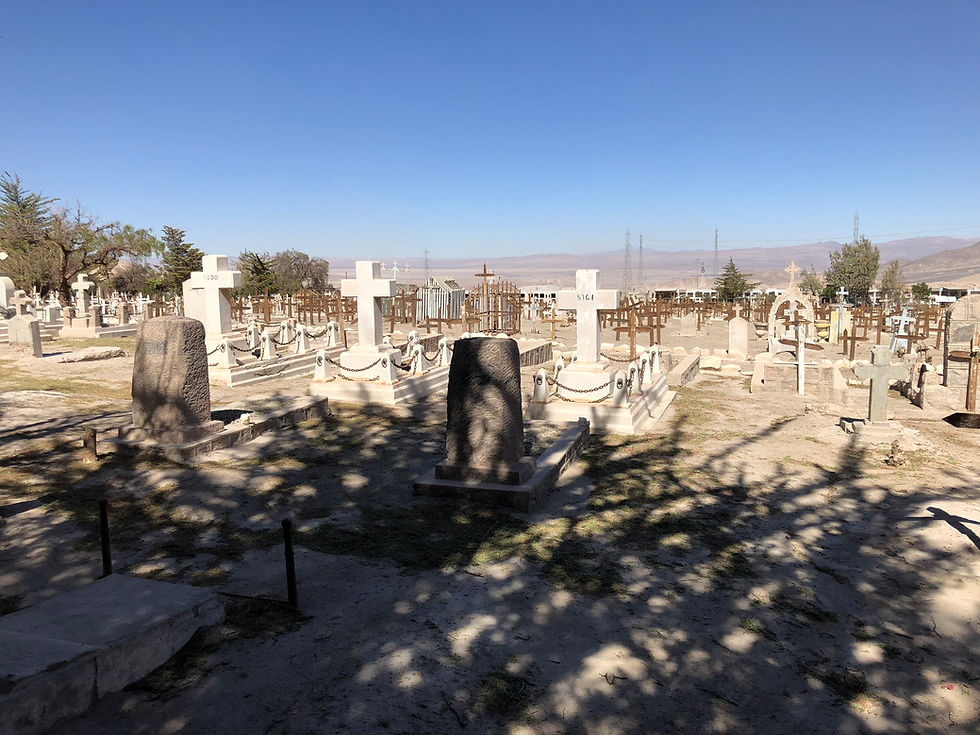How Radium whitened teeth
- Lipmann Walton & Co Ltd

- May 5
- 3 min read
Children of Radium
A Buried Inheritance
By Joe Dunthorne
Hamish Hamilton
Siegfried, the author’s Wagnerian-named Jewish great grandfather, wrote an impenetrable memoir towards the end of his life that no one in the family can finish. Unpromising material, you might think, for a Holocaust era story of Jewish tribulation and survival. But in author Joe Dunthorne’s hands, the story defies expectation to avoid a rehearsal of cruelty, cattle trucks, Nazi guards and persecution, and is instead something altogether very different.

We are in the territory of Fritz Haber (1868-1934) whose work on chlorine contributed to the use of poison gas in WW1 and the development of Zyklon B (Hydrogen Cyanide) for the gas chambers; Jewish scientists whose discoveries and genius were harnessed to Jewish destruction.
Great grandfather, it turns out, is not the ‘grandpa-ish’ old man of family memory but holds a deep secret kept from his descendants; one that, by being internalised, is the possible cause of his later mental illness.
It all seems a long way from the author’s life in Wales and his prickly relationship with his grandma in Scotland who tells her impertinent grandson, when he questions her, that he is asking all the wrong questions about the Holocaust and he should ‘just read a book’.
As the story is revealed in a suspenseful way, I want to avoid spoilers. Suffice it to say, the author’s storytelling (like Ariana Neumann’s in ‘When Time Stopped’ or Philippe Sands’ in ‘East West Street’) is founded on their generation’s perseverance to unearth dusty documents, many in German, from archives in USA and Germany. It is these that allow the author to come to some astonishing conclusions.
How is it, he asks, that his great grandfather is able to bring up his Jewish family in Berlin in relative peace during the mid-1930s and then transfer to Ankara, Turkey?
To avoid telling Joe Dunthorne’s story for him, I will only mention that my own grandfather, a chemist, believed mistakenly that his ownership of a varnishing and paint factory would allow our family to be one of the chosen too. This delusion led to his death and my mother and grandmother’s full tour of four of the most infamous camps.
The book begs us to ask questions about how the motive for personal survival compromises us; what self-deceptions are we prepared to invent to save our bodies, and with what consequences on the soul? The thousand-page memoir typed by Siegfried in a New York mental hospital years later tells its own tale.
Having, myself, spent a lifetime in the metals industry in the world of chemicals and elements the book raises questions I could ask of myself too – to what extent are elements in the periodic table good or bad? Do molecules have intrinsic evil or is it merely their use which makes them so? To what extent does Einstein, you might ask, bear responsibility for the atomic bomb dropped on Hiroshima and the unleashing of the nuclear arms race?
Does Siegfried, the chemical genius and maker of gas masks, tested using phosgene and mustard gas, bear responsibility for the gas chambers?
Uncomfortable questions come with great literature, of which this story is one, which will take its special place amongst the ever-growing list of holocaust literature.
The jaw-dropping title is taken from a brand of toothpaste called ‘Doramad’ whose exciting radioactivity is proclaimed as a teeth-whitening agent made at the plant where Siegfried works. Who was to know, you might ask, that the wonders of radium-emitted X-Rays used by Marie Curie in her X-Ray vans on the front in WW1 to improve surgeons’ outcomes in pinpointing of shrapnel before operations, would later be seen to be the cause of cancers?
The toothpaste was used in Siegfried’s home and given to his children, but it cannot whiten his legacy in his great grandson’s eyes.
By Anthony Lipmann, April 2025
Published in AJR (The Journal of the Association of Jewish Refugees)




Comments